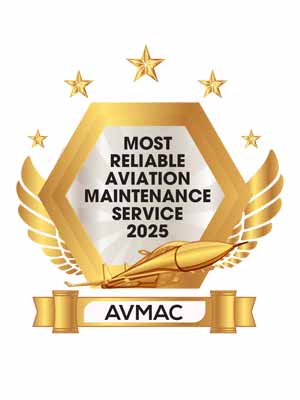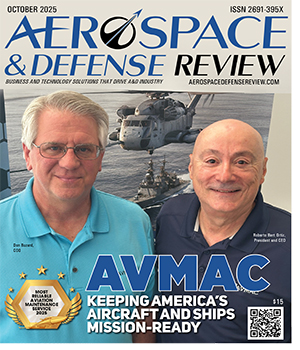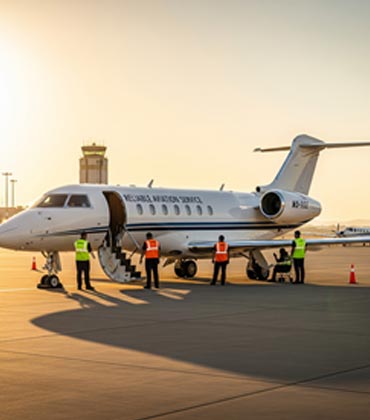THANK YOU FOR SUBSCRIBING
AVMAC stands as a trusted force multiplier for defense and maritime clients, ensuring America’s aircraft and ships remain mission-ready at a moment’s notice. The company specializes in aircraft maintenance, modernization of shipboard systems and aviation facilities, and critical aviation support equipment management— delivering a rare blend of technical expertise and firsthand operational insight. This distinct edge stems from the leadership of Roberto “Bert” Ortiz and Don Buzard, both of whom spent more than three decades ensuring Navy aircraft performed flawlessly in some of the world’s most challenging environments. Their transition from military service to the boardroom didn’t end their commitment to the flight line, it led to the company’s inception. Under their guidance, and with a team composed predominantly of veteran personnel, AVMAC channels decades of hands-on service into results the Department of Defense (DoD) can trust. The company delivers high-level analysis, consulting, technical and management support that consistently meets and often surpasses client expectations. “Who can better support today’s warfighters than those who wore the same cloth and actively employ veterans?” says Ortiz, President and CEO. Shaping a Veteran Force Committed to Readiness The idea for AVMAC took root while its future founders were still serving the Navy. During that time, they witnessed a costly misstep. The Navy divested much of its in-house shipboard aviation experts when designing and overseeing new vessel construction. When ship platforms were delivered, it became clear that gaps in technical knowledge had led to design limitations that affected aviation support. That experience drove home a clear lesson; without deep, specialized aviation knowledge, overall air operations at sea falters. They built AVMAC from the ground up, bringing the expertise needed to keep critical support systems reliable. Many of AVMAC’s contractor maintenance support (CMS) teams are Marine Corps veterans who served in the squadrons they now support. They know the pace, the discipline and the competing demands Marines face. Seasoned professionals with decades in government service inspect and maintain shipboard aviation facilities. Electrical engineers bring experience from building the Navy’s newest aircraft carrier, the USS Gerald R. Ford, while the division director draws on skills honed through the Huntington Ingalls Apprenticeship Program and years in shipbuilding. The story is just as strong in the aviation side. Many of AVMAC’s CMS personnel spent entire military careers working on the same aircraft they now maintain as contractors. They know every quirk, every sound, every fix. It’s mastery no textbook could deliver. This background has made AVMAC a trusted partner, and it’s why AVMAC emphasizes that the DoD gains best results when partnering with Service-Disabled Veteran-Owned Small Businesses, Veteran-Owned Small Businesses and other veteran-led organizations. “We have a tendency to go above and beyond, to support those men and women who are still serving, and that’s our way of giving back,” says Buzard, COO.
Top Aerospace Operations Consultant Service 2025
Your next aerospace operations challenge might not make headline news, but it can still feel like a crisis. A sudden supply chain disruption, a failed inspection, or an unexpected compliance audit can halt production without warning. These problems are no longer rare interruptions; they are part of today’s operating reality, made more complex by global supply networks, specialized components, and just-in-time manufacturing. Traditional consulting teams often arrive with large, slow, and process-heavy models that cannot keep pace with the speed and precision modern operations demand. Companies instead require a lean, on-the-ground approach led by experts who respond quickly, confront the issue directly, and restore operations without unnecessary overhead. Third Party International (TPI) delivers this approach. Drawing on deep experience in aerospace, automotive, and medical industries, the firm deploys consultants who specialize in supplier surveillance, quality management, and operational problem-solving. Acting as an on-site liaison between clients and their suppliers, TPI resolves critical supply chain issues with speed, precision, and clear communication. Its model is cost-efficient because it relies on hourly consultants and local experts, which reduces travel costs, shortens response times, and avoids the burden of large consulting teams.
Most Reliable Business Aviation Service Platform 2025
“We’re AOG.” It’s the call that demands immediate action. An aircraft is grounded (AOG), schedules are on hold and passengers are waiting. Aircraft operators scramble to find the right mechanic to replace a tire or repair bird strike damage before the delay disrupts the rest of the day. This chaos has long plagued business aviation until Alpha Wingman decided to rewrite the playbook. Much like Uber simplified the search for a ride, Alpha Wingman delivers immediate solutions for maintenance emergencies. With a single request, operators see multiple qualified, vetted providers respond in real time, complete with pricing, travel costs and live arrival times. Behind every response is a provider pre-cleared with alcohol and drug testing certifications, insurance and compliance paperwork on file. Backed by a global network of more than 1,100 service providers across 39 countries and supporting over 5,000 aircraft, Alpha Wingman keeps aircraft in the air and stress off the ground, giving teams clarity and confidence when it matters most. “When we started seven years ago, we wanted a platform where all MROs and service providers, big or small, have an equal chance to win work, whether it’s a scheduled event, an AOG or even parts,” says Andy Nixon, president. For operators, that translates into far more choice. Instead of relying only on the big MROs that spend millions on marketing and convention booths, Alpha Wingman surfaces smaller shops with strong reputations that often operate below the radar. By connecting those dots, the platform acts as a one-stop shop for both scheduled and unscheduled work. From a 10,000-foot view, the process is simple: if an operator needs scheduled maintenance or a pre-buy inspection, they upload their due list once with target downtime dates and quote deadlines. With a single click, the request goes out to all vetted providers whose capabilities match the job. Within days, operators may receive five or six competitive quotes that can be compared side by side, complete with reviews, certifications and direct links to each provider’s website and social pages. The result is a more informed decision, free from the bias of who spends the most on advertising.
Top Warfighter Centric Systems Solution 2025
Warfare is evolving from boots on the ground to bytes in the cloud. Data has become the fuel of modern military operations. Centralized command-and-control systems now act as digital war rooms, integrating sensor inputs, satellite imagery and battlefield intelligence to deliver real-time insights and orchestrate precision maneuvers across land, sea, air and cyber domains. Yet this very strength brings a critical weakness. Centralized systems can become single points of failure, tempting targets for adversaries determined to disrupt operations. GALT Aerospace was founded to help solve this vulnerability. GALT specializes in warfighter-focused solutions for military aviation and airborne systems, strengthening capabilities through resilient communication architectures, seamless network integration and rapid technology deployment. Rather than relying on central hubs, GALT decentralizes command and control, pushing decision-making closer to the edge. This enables faster responses in dynamic combat environments and keeps operations running even if central command is compromised. “Modern warfare requires agility and resilience at every node,” says John Kohut, CEO. “GALT Aerospace is contributing to distributed C2 capabilities through increased tactical network interoperability and advanced “sensor-to-weapon” technologies that increase operational tempo and eliminate single points of failure.” First, GALT has addressed critical weaknesses in traditional stovepipe military networks built around specific platforms that don’t share data across domains. GALT’s airborne gateway systems integrate radios and networks to create an interoperable foundation for distributed operations. These airborne nodes translate and route data across tactical targeting networks, common data links and legacy systems, creating a smooth, decentralized flow of information. Warfighters gain shared situational awareness and make faster decisions without routing everything through central command. In contested environments, this keeps forces connected when adversaries target central nodes. GALT demonstrated airborne gateway functionality under fused integrated naval network (FINN). This rapid technology demonstration program tests new connectivity technologies in operationally relevant airborne environments on a four-to-six-month cycle. After building tremendous credibility in airborne networking, GALT faced off against major defense contractors to win the Marine Corps Skytower II airborne network extension (ANE) program under Marine UAS Expeditionary (MUX) Medium Altitude Long Range (MALE). GALT’s agile yet disciplined engineering and integration have rapidly moved SkyTower II from development to flight test and production. It is anticipated that variants of SkyTower II will support the Joint Services and Coalition partners soon.
CXO INSIGHTS
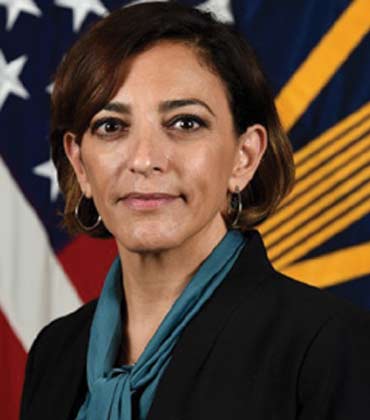
Identifying Risk And Maintaining National Security
Katie Arrington, Chief Information Security Officer, United States Department of Defense

Jetsetting Journeys: A Career Soaring from JFK to Unifi's Unique Aviation Landscape
Luigi Taliercio, Vice President of Operations, Unifi

Strategies for Success and Safety in a Thriving Airline Industry
Alfonso Moreno-Santa, Director of Operations, PrimeFlight

Wheels Up: Inside the Relentless World of AOG
Mark Finger, Manager – AOG Response, Delta Air Lines
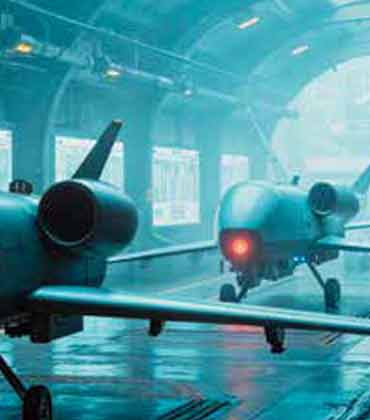
Operational Excellence at the Line
Andrew Ibsen, Duty Maintenance Manager, British Airways
IN FOCUS
EDITORIAL
Strengthening Aviation through Innovation and Insight
As the aerospace industry advances through rapid change, the demand for dependable maintenance, strategic consulting, digital platforms, and defense-focused solutions continues to grow. Aviation maintenance services stand at the core of this progress, ensuring fleets remain safe, efficient, and ready for operation. Precision in every inspection and overhaul protects assets and secures the trust of those who rely on air travel. Operational consulting in the aerospace industry plays an equally pivotal role, helping organizations refine their flight strategies, manage compliance, and adopt innovations that strengthen performance. By guiding decision-making with deep technical insight, consultants provide the clarity needed in an industry defined by complexity. Business aviation has also entered a new era shaped by service platforms that bring together scheduling, maintenance tracking, and operational oversight. These integrated tools create transparency and efficiency, enabling operators to consistently deliver higher standards while adapting quickly to shifting demands. On the defense front, warfighter-centric systems are being designed with end-users in mind, building technology that enhances situational awareness, resilience, and interoperability. Centering solutions around those in the field ensures that missions are supported with the strength and agility required for modern challenges. In this edition, we explore how aerospace innovation is defined by reliable maintenance, strategic consulting, digital service platforms, and warfighter-focused systems, each advancing safety, efficiency, and mission readiness. Together, these advancements signal a forward-looking vision for the aerospace and defense industry. We also present insights from expert CXOs like David Stepanek, Executive Vice President, Sales and Chief Transformation Officer, Bristow Group and Ron Brown, Avionics Engineering Manager, Kalitta Air, who offer their opinions on the currently used business practices. We hope that the valuable insights from industry leaders and the solutions and services featured in this edition will help you make informed decisions for your business.

However, if you would like to share the information in this article, you may use the link below:
https://www.aerospacedefenserevieweurope.com/edition/october-2025-43.html



